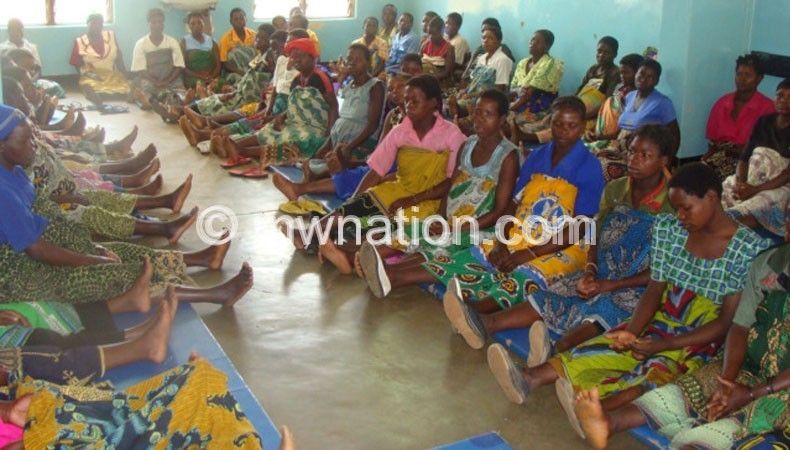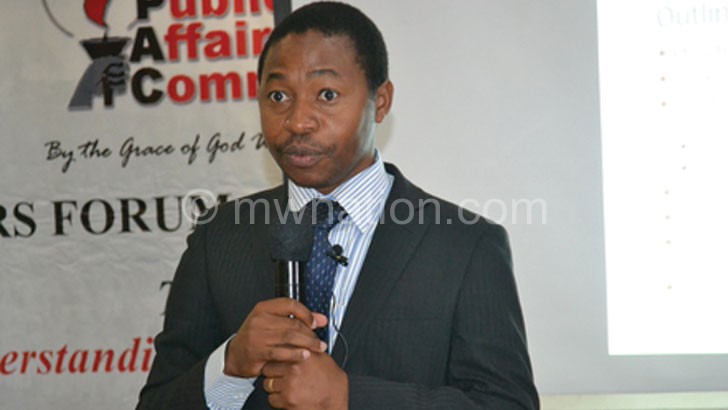Tales from Bed 29
It’s 5.37pm when we venture into mazy corridors of Karonga District Hospital (KDH) to meet with Jean Msowoya. She is 26 and married Mavuto Mhango in 2005.
Confined to a wheelchair for seven years as a result of paralysing backaches that followed the birth of her first born daughter Costine, her story mirrors Malawi’s wobbly walk to safe motherhood—how women with disability could be the worst hit.

We reach Bed 29 to find that the pregnant woman from Lushununu, a hard-to-reach lakeside spot eclipsed by hills of Karonga Nyungwe, is nowhere to be seen in the overcrowded maternity ward where those waiting to give birth are ‘refugees’.
They admittedly vacate the 12-bed ward at sunrise and return at sunset to sleep on the floor under the beds meant for mothers with newborns.
“It’s a population crisis,” says ward in-charge Spain Chimaliro. “The hospital, built in 1988, has no waiting room for pregnant women; we have to do with the available room which was meant for fewer people.”
But Msowoya’s bed was vacant because KDH has no functional scanner for detecting the condition of unborn babies.
We tracked her down to Care Private Clinic and Dental Surgery where the state-run hospital has been referring women for ultrasound scanning for about six months. Typical of Karonga Town, ringing bicycle bells, hooting cars and chattering crowds are common asides at Care.
Despite the din, we are welcomed by moans of a woman struggling with vomits at the doorstep; a bench of her bare-chested pregnant colleagues perspiring profusely, cries of a child resisting an anti-malaria injection and flashbacks of how a woman singlehandedly delivered a dead baby having arrived ‘too early’ for scanning.
“She arrived in a critical state around 10 am and she had to wait till 2 pm when our part-time radiographer starts scanning patients. She was sitting on the veranda when I left for lunch.
“Our dental clinician rushed to her rescue when she started grappling with labour pains, but it was too late to save the baby,” recalls a nurse-cum-midwife.
The woman in labour was rushed to the clinic on a bicycle carrier because KDH had no ambulance on standby, witnesses say.
“It was nothing to smile about,” says Foundation for Community Support (Focus) executive director Kossam Munthali having witnessed the stillbirth.
However, Msowoya can finally afford a smile. She looks liberated, almost free from the odds of childbirths typical of her remote locality.
“I have been to five hospitals with this baby,” she caresses her bulge.
She married at 15 and became a mother at 16. Before long, she started experiencing back pains that compelled her parents to recall her from marriage to consult with pastors and herbalists.
At 17, when her baby started walking, Msowoya could not move a leg. Paralysed, she returned to her husband just last year and got pregnant again.
The pregnancy has taken her to Chilumba Barracks Hospital, St Anne’s Health Centre and Chilumba Health Centre where access to quality healthcare services entails walking for to three hours.
Msowoya is happy Care Clinic is complementing government in offering life-saving services to women, but says KDH needs to have sufficient tools and drugs at arm’s length.
The pay facility’s clinical officer, Evance Mphenzi, unmasks the vital machine Karonga’s largest hospital lacks.n





